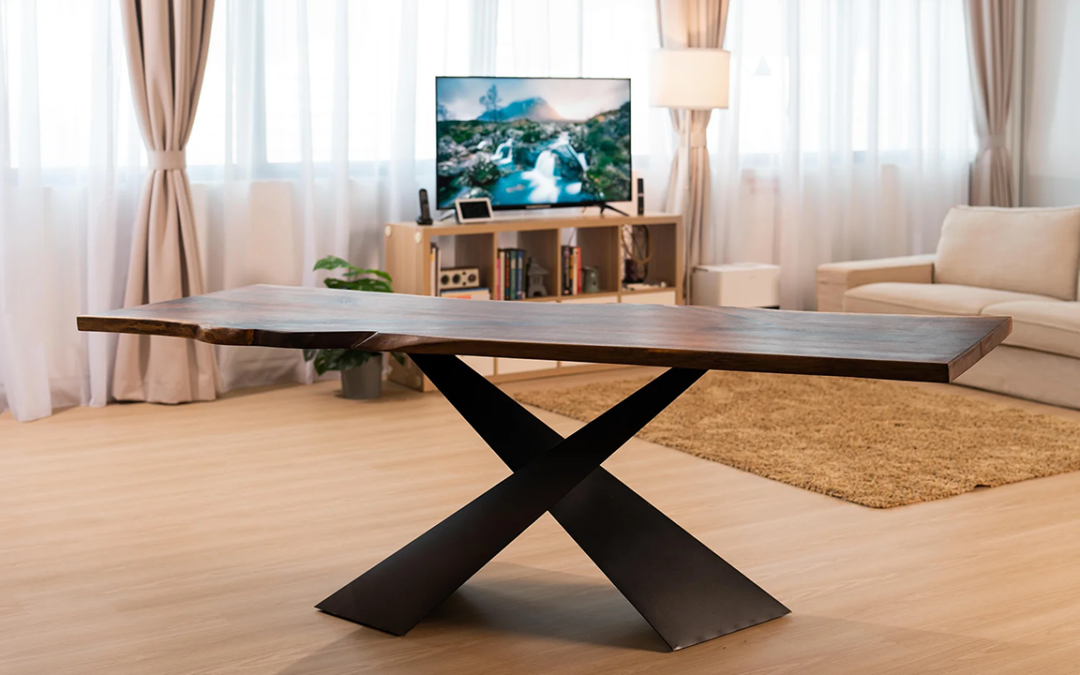Customized Dining Room Table Legs: A Stylish Addition to Any Home
Customized Dining Room Table Legs: A Stylish Addition to Any Home
Blog Article
A Thorough Take A Look At Table Leg Styles: Discovering the Ideal Suit
Choosing the right eating table leg style is critical for both aesthetic charm and practical performance. Typical four legs use timeless elegance and security, while the stand base offers enhanced legroom and a contemporary look. For those with bigger tables, trestle legs guarantee strong assistance, whereas hairpin legs present a mid-century modern vibe with their minimalist layout. The x-shaped legs mix contemporary style with improved stability. Each of these options brings distinct advantages, making the selection greater than simply a matter of choice. Explore better to find which style perfectly matches your dining space and way of living.
Standard 4 Legs
Amongst the numerous kinds of eating table leg styles, the standard four-leg design stays a classic choice for lots of homes. 4 legs give well balanced support, making sure the table remains stable and capable of bearing significant weight (dining room table legs).
From a visual perspective, the traditional four-leg layout can be quickly adjusted to different indoor styles. Whether crafted from wood, steel, or a combination of materials, these legs can be delicately carved, sleek and minimalistic, or anything in between. Their convenience allows them to match both rustic and contemporary setups flawlessly.
In addition, the straightforward structure of the four-leg design assists in convenience of motion and positioning within an area. Unlike even more complex bases, this design reduces obstructions, providing ample legroom for restaurants. In summary, the typical four-leg table leg design marries enduring style with practical capability, making it a sharp selection for those seeking both form and function in their dining furnishings.
Stand Base
Typically commemorated for its stylish and space-efficient style, the pedestal base is a recognized option to the typical four-leg configuration in eating table leg styles. This distinct base usually includes a solitary central column supporting the tabletop, which can vary in form, from ornately sculpted wood to smooth, modern-day metal. One of the main benefits of the stand base is its capability to make the most of legroom and seating versatility. Without corner legs, restaurants are managed better liberty of movement, making it an optimal selection for round and oblong tables that advertise more intimate and comprehensive celebrations.
Furthermore, the stand base's main assistance can deal with significant weight, allowing for the usage of heavier table tops, such as marble or thick hardwood. This strength paired with its visual adaptability makes the pedestal base a preferred choice in both standard and modern indoor setups. It can flawlessly integrate with different layout motifs, from timeless beauty to minimalist modernity. The main column itself uses a canvas for detailed layouts and imaginative expressions, including a component of aesthetic passion under the table. In recap, the stand base combines capability snappy, making it an improved and useful choice for varied visit this site eating atmospheres.
Trestle Legs
Trestle legs give a robust and timeless foundation for dining tables, defined by their horizontal cross-bracing and sturdy support light beams. Stemming from middle ages times, this layout has evolved yet preserved its necessary framework, making it a perennial fave in both traditional and modern settings. The main trestle beam of light, frequently supported by 2 or even more vertical posts, uses phenomenal stability, enabling for larger table lengths without the need for additional legs.
A significant advantage of trestle leg tables is the enough legroom they supply. Unlike tables with 4 corner legs, the absence of blockages click this link at the table's sides supplies unimpeded room for chairs and restaurants, boosting comfort and ease of access. This makes trestle tables suitable for fitting larger gatherings, whether in an eating space or a reception hall.
The visual flexibility of trestle legs is noteworthy. Readily available in a range of products such as timber, steel, and composite, they can be completed to match a large variety of indoor styles. From rustic farmhouse to smooth modern layouts, trestle legs can be tailored to fit specific tastes. Their enduring allure and functional advantages make trestle legs a compelling option for those seeking both design and usefulness in their eating table.
Barrette Legs

The appeal of hairpin legs exists in their simpleness and flexibility - dining room table legs. Offered in a series of products, including steel and brass, they can be finished in countless shades to complement various interior styles. Whether coupled with a rustic wood tabletop or a contemporary glass surface, continue reading this barrette legs effortlessly blend performance with a touch of vintage beauty
Resilience is another noteworthy attribute of barrette legs. Despite their delicate appearance, these legs are crafted to birth considerable weight, making sure the table continues to be stable and secure. Additionally, they are relatively simple to set up, making them a preferred option for DIY lovers and expert furniture manufacturers alike.
X-Shaped Legs

Built from materials such as steel, wood, or a combination of both, X-shaped legs can be customized to match various style choices. Steel legs typically lend a sleek and industrial feeling, suitable for loft-style apartment or condos and contemporary eating spaces. On the other hand, wood X-shaped legs provide a warmer, more rustic allure, suitable for farmhouse or diverse insides. The adaptability in materials enables property owners to tailor their eating tables to better fit their total design scheme.
Moreover, the design behind X-shaped legs makes sure even weight circulation, reducing the threat of tottering and enhancing resilience. This makes them especially appropriate for bigger dining tables that need extra assistance. Fundamentally, X-shaped legs mix useful engineering with modern-day aesthetics, making them an ageless selection for diverse eating settings.
Verdict
An extensive understanding of eating table leg styles discloses the unique qualities and benefits of each design. Trestle legs guarantee robust support for bigger tables, and hairpin legs present a mid-century modern-day visual.
Report this page